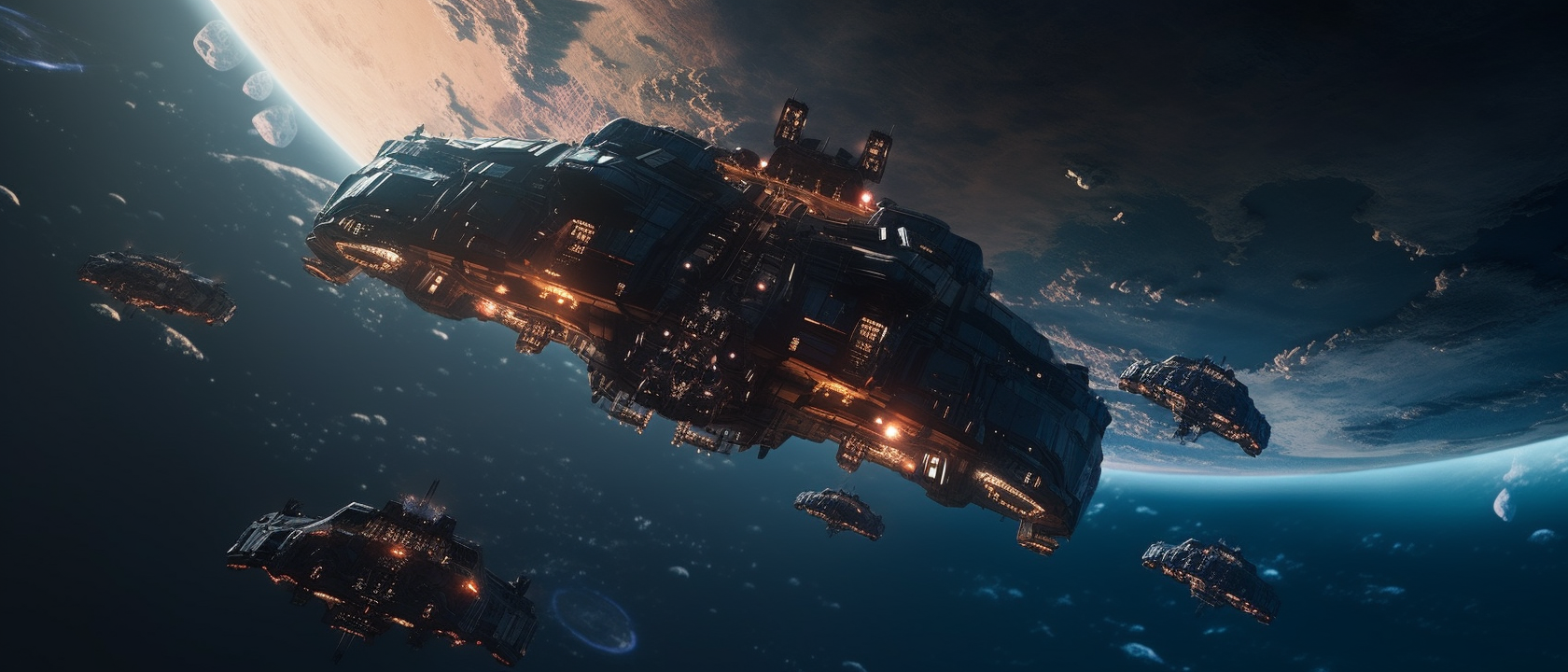Zeppelin Class Transport MK II
Overview
What are people imagining when they think about transport in space? Do they think about huge engines strapped to a Space Ripper and a lot of cargo space? Of a box with white burning ion engines and a cockpit?
Maybe. But what if those engineers stumbled upon old ships, old designs and adapt them for the coldness of space?
Lets find out.
Construction
The name of the transporter does not come from out of the blue. The short explanation behind weeks, even months of testing and designing comes from the need of a lot of space without enclosing the cargo in a huge amount of pressurized containment. Which would also require to bring a lot of air with the ship. Not a feasable task, so there should be a cooling system, but no pressure inside the container area.
Due to a thing Bob Ross called "happy little accidents" one of the designers scrolled through old and new aircrafts and happened to had an idea has they looked at pictures of Zeppelins. In this case it was also the Hindenburg which burned down, but they also got ideas for that, more precise of the prevention of that.
So they put the entire passenger-, crew- and system-compartment on top of the "balloon" including the turrets. Engines are at the back of the reinforced balloon while a huge liquid container was put at the bottom. There they could haul any kind of liquid.
The balloon itself was hollow and could be opened at the front like a petal with four segments. The loading mechanisms inside the balloon could unload huge chunks of the 360.000 containers so that drones and small freighters could fetch the containers outside the ship. Cranes support the loading and unloading.
The Zeppelin class is not designed to fly into any kind of orbit or atmosphere. There are a few ships which can support the descent and the ascent, but the Zeppelin class is too heavy and the engines too weak to get it into space again.
History
The Zeppelin Class Transport MK I was designed for traveling and trading by the Travel & Trade LTD in a solar system after Stepstone was build and resources were needed on Mars, Venus, Saturn and the moons and rings of Saturn. They didn't had a Space Ripper installed since it was inside the solar system regardless of the distance. They were powered by weak fusion reactors and could transport a huge amount of standard shipping containers, around 200.000 and up to 10 passengers.
The MK I of the Zeppelin class was designed to hold up to ten passengers and their luggage plus the crew of 30 people, because the MK I was prone to accidents, wear & tear and the crew had to rotate in more shifts than the MK II. After the revisions the MK I could hold up to 20 passengers and 20 crew members, the same size as the MK II.
The MK I was constructed, operated and owned by the Travel & Trade Company, so it had the designation "TTC" until the company decided - after the first contact with the Anthraxians and the Lyranians - that they needed a ship for intergalactic travel. But the Valerian Empire passed a bunch of laws which attributed every vessel capable of intergalactic space travel - this means, having a Space Ripper installed - the designation VAL. So the T&T LTD decided it was time to design a new ship.
The Zeppelin Class Transport MK II was born. Same design, a bit larger for the additional technology, a larger compartment for passengers, added a good amount of space for container.
And then the Valerian Empire forced T&T to release the blueprints so that other companies or even privat merchants could download and build their own Zeppelin transporters.
Arms & Defenses
The outer hull is reinforced with durable steel, but isn't very good at tanking a lot of laser or plasma shots. It can withstand a good amount of incoming ballistic bullets, but nothing larger like missiles.
In terms of armaments the crew is trained against boarding activites and the MK II only has two double-barrel turrets on top of the main cabin. They pack a mean punch for smaller vessels, but everything above a traveling merchant can easily sustain a few shots or maybe the entire payload.
Impact on society
After the Valerian Empire force T&T to release the blueprints, there were only a few privat merchants who were rich enough to actually contract a manufacturer to build a Zeppelin transporter. Stepstone was flooded with contracts until the next factories came into play.
It only took a decade to drop the manufacturing cost to a reasonable amount even moderate wealthy citizens could afford a MK II or a used MK I. As the first used MK II was brought to the sellers, it dropped even more and now it is a common sight, even for privat merchants. Families putting their salary together to build a family business. Old families trying to get their foot back into the game.







I really like the fusion of old technology with space elements, good job on the article :)